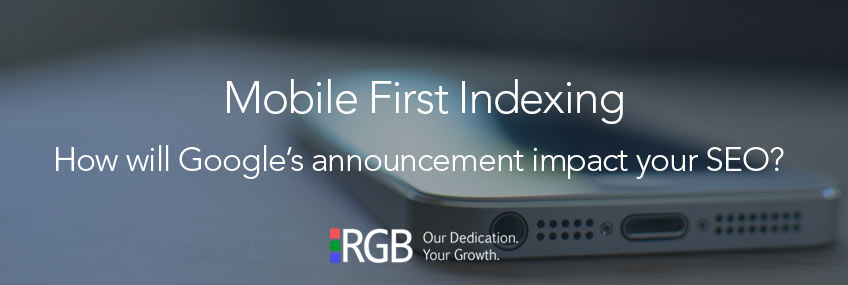A recent Google announcement confirmed what most of us in the web design world knew was coming – mobile first indexing. This news has the potential to damage the ranking of websites that have not been built with responsive content and website design applications.
What is mobile first indexing?
Up until this point in time, Google’s crawl-bots would visit the desktop version of your website to determine indexing and ranking for your website. As times change people have begun to use their smartphone to visit websites instead of desktop computers. In turn, Google has made the adjustment to use your website’s mobile version to index your website. In the past the desktop was your website’s primary version for indexing.
Now, the mobile version of your website is about to take the lead.
When a Googlebot visits your site it will soon start looking at the mobile-friendly version of your site. If you don’t have a responsive website your ranking on search engines may be negatively affected.
How do I tell if my website has a mobile version?
Check out your website on a mobile device such as a smartphone or tablet. If the content and images fit on the screen and you can read it without magnifying the screen, there is a good chance your site has been built with mobile responsive capabilities.
However, even if your website looks good on every screen, there are still a few more things you need to look out for.
Condensed content
Make sure that the desktop version of your website and the mobile version of your website have the same amount of content. If your desktop version has 600 words on the homepage, but your web designer condensed it to 250 for the mobile version your SEO strategies could take a hit, and the result could be a drop in ranking on organic search results. If your content is identical, you should not be affected as Google begins indexing the mobile version of your website.
Lacking the extras
Content isn’t the only corner that can be cut in mobile web design. Social media links, meta data, images, accordion tabs and more can be dropped off. Make sure that the all features on your desktop view are available on mobile.
Mobile Load Speed
Confirm that the time it takes to load your website on smartphones and tablets has been optimized to load as fast as possible. Some people may leave your site if it takes too long to load. In fact, if your site doesn’t load in 3 seconds or less, most people won’t stick around.
Google’s research discovered that the average load speed of a mobile landing page is 15 seconds. Which means there is a good chance that your website is failing a mobile speed test.
A variety of optimization can be done to increase mobile site speed including:
- Optimize & Compress Images
- Eliminate render-blocking JavaScript and CSS in above-the-fold content
- Leverage Browser Caching
- Minify JavaScript and/or CSS
- Reduce server response time
Concerned about your site speed? Enter your webpage url here. If you don’t like what you see give us a call, we’re here to help.
My website isn’t responsive – help!
The first thing we tell business owners without a mobile website is not to panic. Google has just recently launched this initiative, and they have provided enough time for those who need to make the change to responsive web design.
That doesn’t mean you can relax. Now is the time to start looking for the right web design company for responsive design. If you’re interested in learning how RGB can help you we invite you to learn more about our team. If you like what you see simply fill out our contact form or just give us a call.
Want to learn more? Read Google’s full announcement concerning mobile-first indexing.


